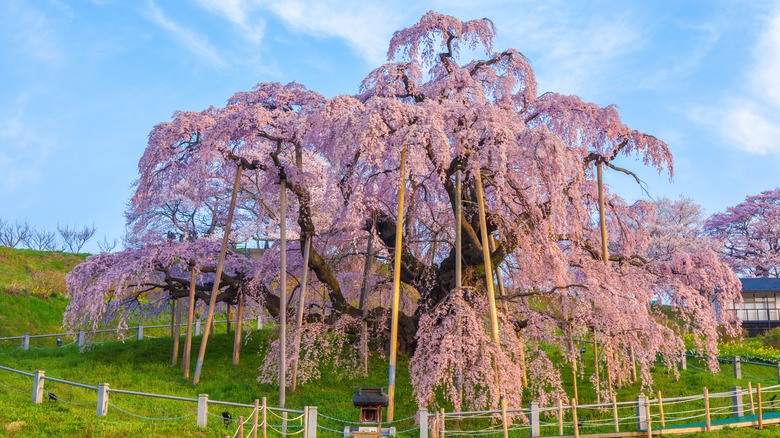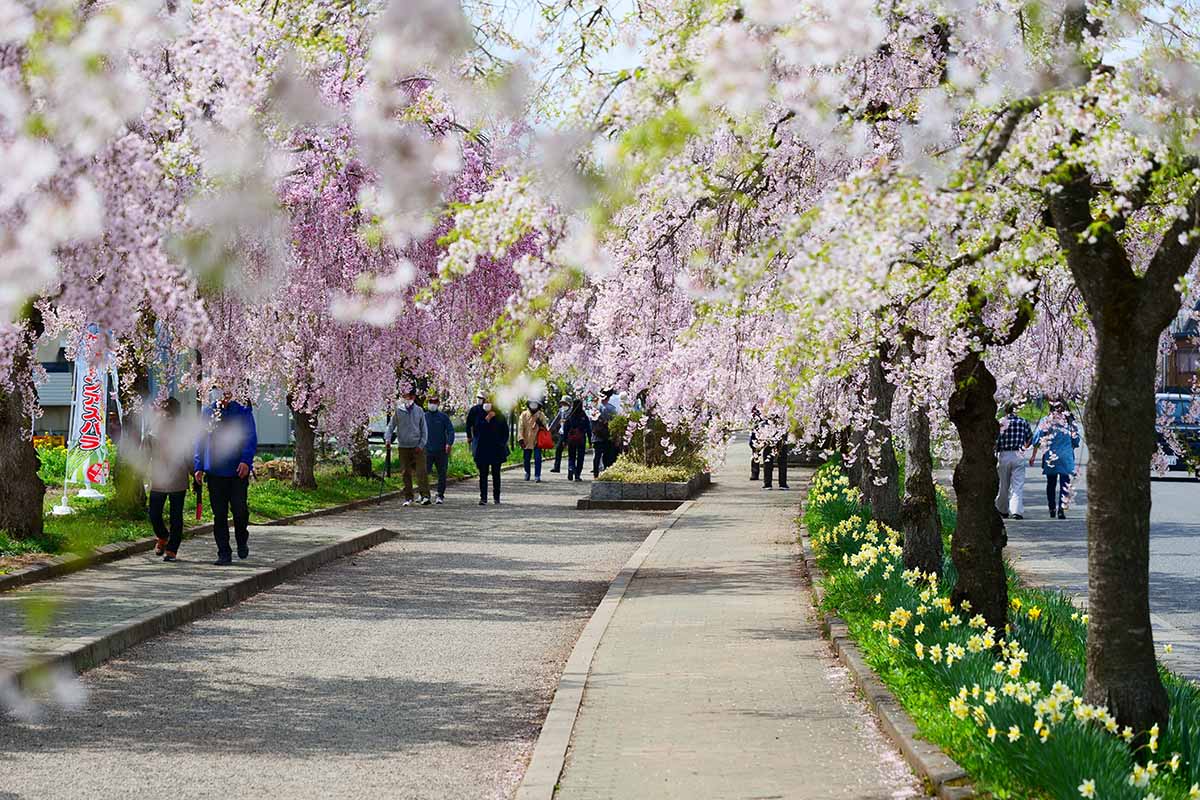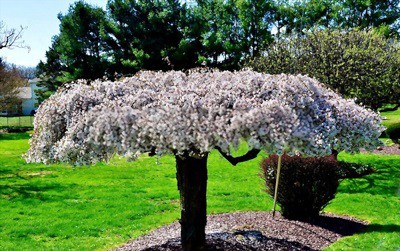Understanding the Best Season for Planting a Weeping Cherry Tree
Planting a weeping cherry tree at the right time of year is crucial for its growth and survival. Weather conditions, soil temperature, and tree dormancy all play a significant role in determining the best season for planting. In general, spring and fall are considered the best times to plant a weeping cherry tree, as the weather is mild and rainfall is more consistent.
During the spring, the soil has warmed up, and the air temperature is mild, making it an ideal time for planting. The tree will have the entire growing season to establish itself before the winter. In contrast, planting in the fall allows the tree to establish its root system before the ground freezes, reducing transplant shock.
However, it’s essential to avoid planting a weeping cherry tree in extreme weather conditions, such as during a heatwave or when the soil is waterlogged. This can cause stress to the tree, leading to disease or pest issues. Additionally, planting in areas with poor soil quality or inadequate spacing can also negatively impact the tree’s growth.
When deciding when to plant a weeping cherry tree, it’s also important to consider the specific climate and region you are in. In areas with a mild winter, planting in the fall may be a better option, while in areas with a harsh winter, spring may be a better choice. Understanding the specific needs of your tree and the local climate will help ensure a healthy and thriving tree.
By planting a weeping cherry tree at the right time of year, you can set it up for success and enjoy its beautiful blooms and elegant shape for years to come. Whether you’re a seasoned gardener or a beginner, taking the time to understand the best season for planting a weeping cherry tree will pay off in the long run.
How to Choose the Perfect Time to Plant Your Weeping Cherry Tree
Determining the best time to plant a weeping cherry tree in your specific region requires careful consideration of several factors. Climate, soil type, and frost dates all play a crucial role in deciding when to plant. To ensure optimal growth and survival, follow these steps to choose the perfect time to plant your weeping cherry tree.
Step 1: Check the Climate
Understanding your local climate is essential in determining when to plant a weeping cherry tree. If you live in an area with a mild winter, you may be able to plant in the fall or early spring. However, if you live in an area with a harsh winter, it’s best to plant in the spring after the last frost.
Step 2: Consider the Soil Type
The type of soil you have in your garden also affects when to plant a weeping cherry tree. If you have heavy clay soil, it’s best to plant in the spring or fall when the soil is moist but not waterlogged. If you have sandy soil, you may be able to plant in the summer, but be sure to provide adequate watering.
Step 3: Check the Frost Dates
Frost dates are critical in determining when to plant a weeping cherry tree. Make sure to check the average frost dates for your area and plant after the last frost. This will ensure that your tree is not damaged by frost and will have the best chance of survival.
Step 4: Observe the Weather
Finally, observe the weather forecast before planting your weeping cherry tree. Avoid planting during extreme weather conditions, such as during a heatwave or when the soil is waterlogged. Instead, choose a period with mild weather and adequate moisture.
By following these steps, you can determine the perfect time to plant your weeping cherry tree and ensure optimal growth and survival. Remember to consider your local climate, soil type, and frost dates when deciding when to plant, and always observe the weather forecast before planting.
The Benefits of Planting a Weeping Cherry Tree in Spring
Spring is a popular time to plant a weeping cherry tree, and for good reason. The warmer weather, increased moisture, and reduced risk of frost damage make it an ideal time for planting. When deciding when to plant a weeping cherry tree, spring is a great option to consider.
One of the main benefits of planting a weeping cherry tree in the spring is the warmer weather. As the soil temperature rises, the tree’s roots begin to grow, and the tree starts to produce new leaves and flowers. This is a critical period for the tree’s development, and the warmer weather helps to promote healthy growth.
In addition to the warmer weather, spring also brings increased moisture, which is essential for a newly planted weeping cherry tree. Adequate moisture helps to establish a strong root system, which is critical for the tree’s survival. By planting in the spring, you can take advantage of the natural rainfall and reduce the need for frequent watering.
Another benefit of planting a weeping cherry tree in the spring is the reduced risk of frost damage. As the weather warms up, the risk of frost decreases, and the tree is less likely to suffer damage from cold temperatures. This is especially important for weeping cherry trees, which are sensitive to frost and can be damaged by even light frosts.
Finally, planting a weeping cherry tree in the spring allows you to enjoy the tree’s beautiful blooms and elegant shape throughout the growing season. Weeping cherry trees are known for their stunning flowers, which bloom in the spring and attract pollinators and other wildlife. By planting in the spring, you can enjoy the tree’s beauty and benefits throughout the year.
Overall, planting a weeping cherry tree in the spring is a great option to consider. The warmer weather, increased moisture, and reduced risk of frost damage make it an ideal time for planting. By taking advantage of the spring planting season, you can give your weeping cherry tree the best chance of success and enjoy its beauty and benefits for years to come.
Planting a Weeping Cherry Tree in Fall: A Viable Alternative
While spring is a popular time to plant a weeping cherry tree, fall is also a viable alternative. In fact, planting in the fall can offer several benefits, including cooler temperatures, reduced transplant shock, and improved root growth. When deciding when to plant a weeping cherry tree, consider the advantages of planting in the fall.
One of the main benefits of planting a weeping cherry tree in the fall is the cooler temperatures. As the weather cools down, the tree’s growth slows down, and it prepares for dormancy. This makes it an ideal time to plant, as the tree will have a chance to establish itself before the winter.
Another benefit of planting in the fall is reduced transplant shock. When a tree is transplanted, it can experience shock, which can lead to disease and pest issues. However, when planted in the fall, the tree has a chance to establish itself before the winter, reducing the risk of transplant shock.
Improved root growth is also a benefit of planting a weeping cherry tree in the fall. As the tree grows, its roots will have a chance to establish themselves in the soil, making it stronger and more resilient. This is especially important for weeping cherry trees, which can be sensitive to wind and weather conditions.
Additionally, planting in the fall can give you a head start on the growing season. By planting in the fall, you can give your tree a chance to establish itself before the winter, and it will be ready to grow and thrive come spring.
When planting a weeping cherry tree in the fall, make sure to choose a location with well-draining soil and full sun to partial shade. Also, be sure to water the tree regularly, especially during its first year of growth. With proper care and maintenance, a weeping cherry tree planted in the fall can thrive and provide beauty and elegance to your landscape for years to come.
What to Avoid When Planting a Weeping Cherry Tree
When planting a weeping cherry tree, it’s essential to avoid common mistakes that can affect the tree’s growth and survival. By being aware of these potential pitfalls, you can ensure that your tree thrives and provides beauty and elegance to your landscape for years to come.
One of the most critical mistakes to avoid is planting in extreme weather conditions. Avoid planting during intense heatwaves, droughts, or periods of heavy rainfall. These conditions can cause stress to the tree, leading to disease and pest issues.
Poor soil quality is another common mistake to avoid. Weeping cherry trees prefer well-draining soil with a pH between 6.0 and 6.5. If your soil is heavy clay, sandy, or lacking in organic matter, it may not provide the necessary nutrients for the tree to thrive.
Inadequate spacing is also a mistake to avoid. Weeping cherry trees can grow up to 15 feet wide, so make sure to provide enough space for the tree to mature. Planting too close to other trees, buildings, or power lines can cause damage to the tree and surrounding structures.
Planting at the wrong depth is another mistake to avoid. Make sure to plant the tree at the same depth as it was in the nursery, and avoid planting too deeply. This can cause the tree to become waterlogged, leading to root rot and other problems.
Finally, avoid over-watering or under-watering your weeping cherry tree. Weeping cherry trees prefer consistent moisture, especially during their first year of growth. Avoid watering too frequently, as this can cause the tree to become waterlogged and susceptible to disease.
By avoiding these common mistakes, you can ensure that your weeping cherry tree thrives and provides beauty and elegance to your landscape for years to come. Remember to choose the right location, prepare the soil properly, and provide adequate care and maintenance for your tree.
Preparing the Soil for Your Weeping Cherry Tree
Before planting a weeping cherry tree, it’s essential to prepare the soil to ensure optimal growth and health. Weeping cherry trees prefer well-draining soil with a pH between 6.0 and 6.5. Here are some tips on how to prepare the soil for your weeping cherry tree:
Test the pH levels of your soil to determine if it’s within the optimal range for weeping cherry trees. You can purchase a soil testing kit or send a sample to a lab for analysis. If your soil is too acidic or alkaline, you can adjust the pH by adding lime or sulfur.
Add organic matter to the soil to improve its structure and fertility. Compost, well-rotted manure, or peat moss can be added to the soil to provide essential nutrients for the tree. Mix the organic matter into the top 12 inches of soil to create a well-draining and fertile growing medium.
Remove any debris, rocks, or weeds from the planting area. Weeping cherry trees prefer a clean and weed-free environment to grow and thrive. Use a garden fork or spade to loosen the soil and remove any debris.
Level the planting area to ensure it’s even and flat. Weeping cherry trees prefer a level surface to grow and spread out. Use a rake or shovel to level the soil and create a smooth surface.
Finally, water the soil thoroughly before planting the weeping cherry tree. This will help settle the soil and provide enough moisture for the tree to establish itself. Water the tree regularly during its first year of growth, especially during hot and dry weather.
By following these tips, you can prepare the soil for your weeping cherry tree and ensure optimal growth and health. Remember to choose a location with full sun to partial shade and well-draining soil for the best results.
Caring for Your Newly Planted Weeping Cherry Tree
Caring for a newly planted weeping cherry tree requires attention to its watering, fertilizing, and pruning needs. By providing the right care, you can help your tree establish a strong root system, promote healthy growth, and encourage blooming.
Watering is essential for a newly planted weeping cherry tree. Water the tree regularly, especially during its first year of growth. Aim to provide about 1 inch of water per week, either from rainfall or irrigation. Avoid overwatering, which can lead to root rot and other problems.
Fertilizing is also important for a newly planted weeping cherry tree. Use a balanced fertilizer that contains equal amounts of nitrogen, phosphorus, and potassium. Apply the fertilizer in early spring, following the manufacturer’s instructions. Avoid overfertilizing, which can damage the tree’s roots and promote weak growth.
Pruning is a critical aspect of caring for a newly planted weeping cherry tree. Prune the tree in late winter or early spring, removing any dead, diseased, or damaged branches. This will help promote healthy growth, encourage blooming, and maintain the tree’s shape.
In addition to watering, fertilizing, and pruning, there are several other things you can do to care for your newly planted weeping cherry tree. Mulch around the base of the tree to retain moisture, suppress weeds, and regulate soil temperature. Keep the area around the tree free of debris and weeds, which can compete with the tree for water and nutrients.
Finally, monitor your tree’s health regularly, looking for signs of pests, diseases, or nutrient deficiencies. Take action promptly if you notice any problems, and consult with a gardening expert or arborist if you’re unsure of how to address the issue.
By following these care tips, you can help your newly planted weeping cherry tree thrive and enjoy its beauty and benefits for years to come.
Common Problems to Watch Out for When Growing a Weeping Cherry Tree
While weeping cherry trees are relatively low-maintenance, they can still be susceptible to certain problems. Here are some common issues to watch out for when growing a weeping cherry tree:
Pests: Weeping cherry trees can be vulnerable to pests such as aphids, scales, and spider mites. These pests can cause damage to the tree’s leaves and flowers, and can also transmit diseases. Regularly inspect your tree for signs of pests, and use organic or chemical controls as needed.
Diseases: Weeping cherry trees can be susceptible to diseases such as powdery mildew, leaf spot, and root rot. These diseases can cause damage to the tree’s leaves, flowers, and roots, and can also reduce the tree’s overall health. Regularly inspect your tree for signs of disease, and use fungicides or other treatments as needed.
Nutrient deficiencies: Weeping cherry trees require a balanced diet of nutrients to grow and thrive. Nutrient deficiencies can cause problems such as yellowing leaves, stunted growth, and reduced flowering. Regularly fertilize your tree with a balanced fertilizer, and have your soil tested to determine if any nutrient deficiencies exist.
Environmental stress: Weeping cherry trees can be susceptible to environmental stressors such as drought, extreme temperatures, and wind. These stressors can cause damage to the tree’s leaves, flowers, and roots, and can also reduce the tree’s overall health. Regularly water your tree, and provide protection from extreme temperatures and wind.
By being aware of these common problems, you can take steps to prevent them and ensure the health and well-being of your weeping cherry tree. Regularly inspect your tree, and take action promptly if you notice any problems.
In addition to these common problems, there are several other things to watch out for when growing a weeping cherry tree. Keep an eye out for signs of disease, pests, and nutrient deficiencies, and take action promptly if you notice any problems. With proper care and attention, your weeping cherry tree can thrive and provide beauty and elegance to your landscape for years to come.






